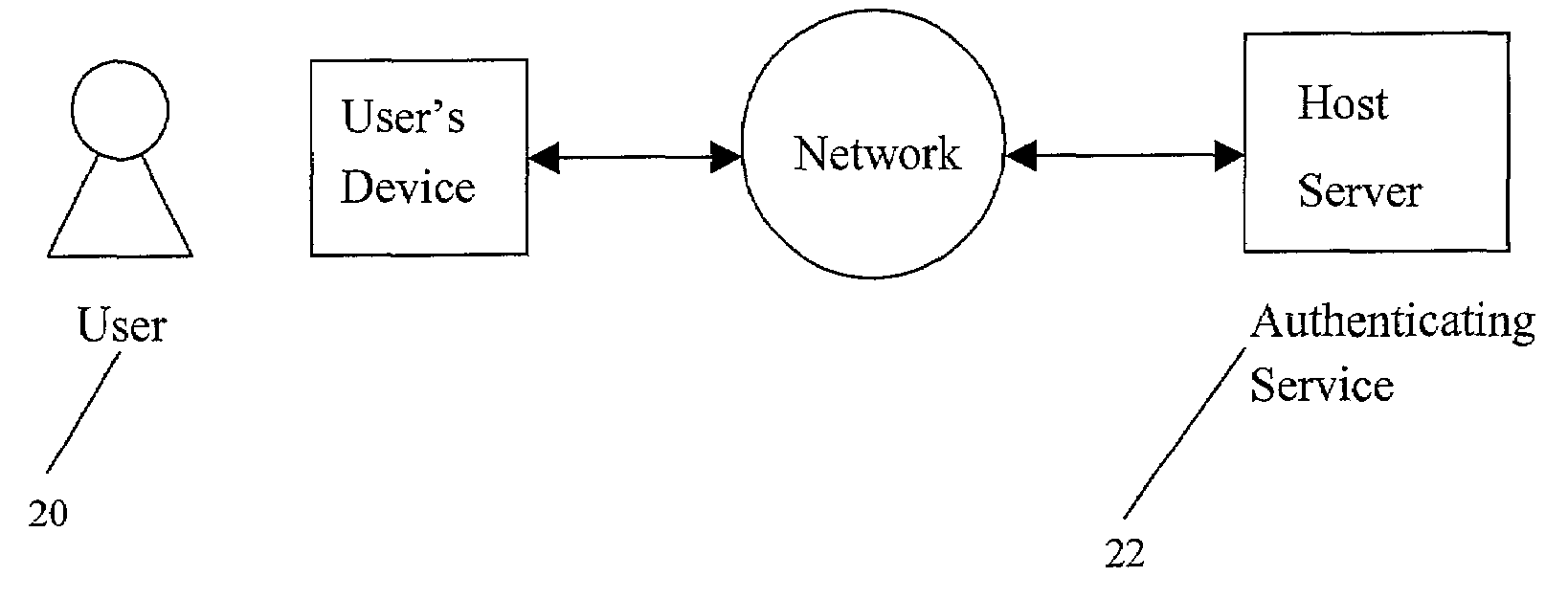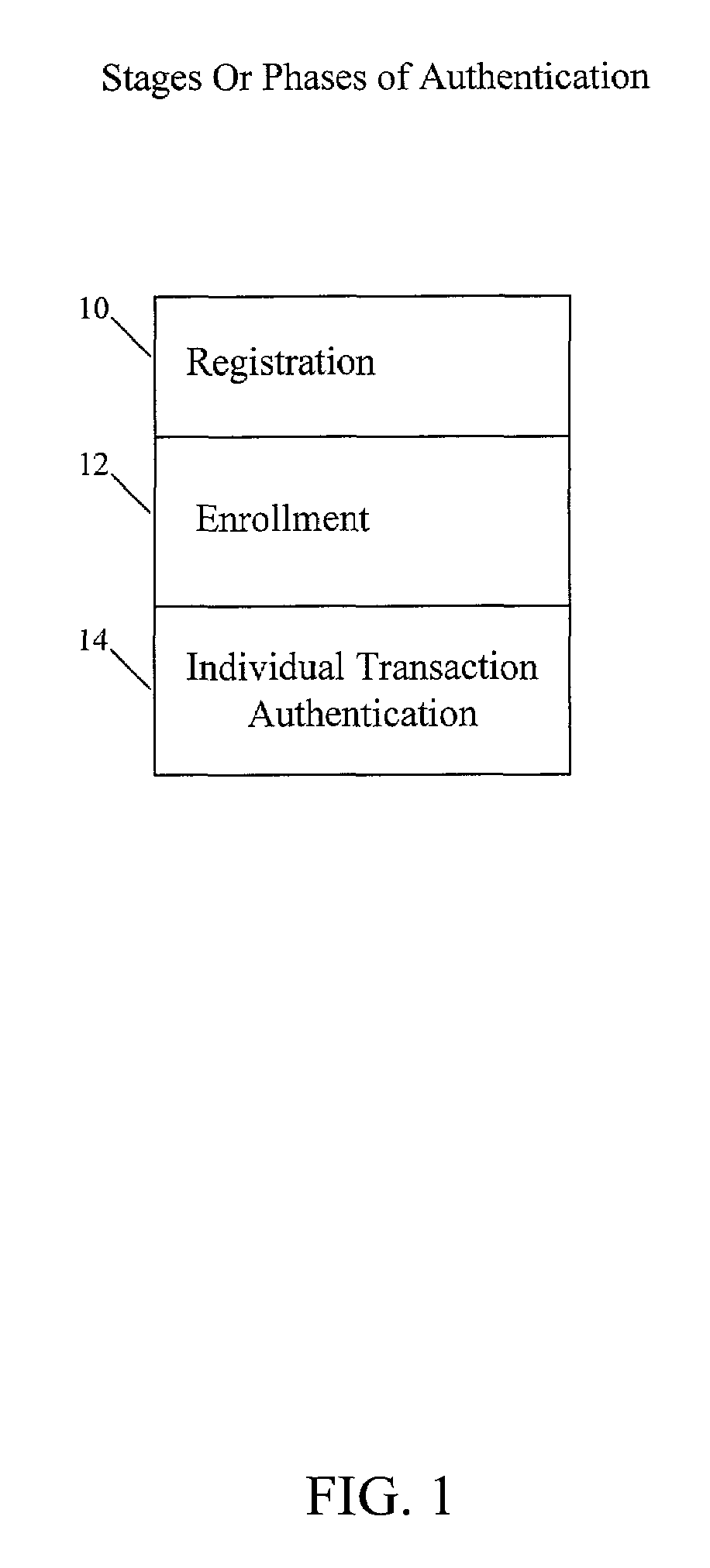Method and system for strong, convenient authentication of a web user
a user authentication and web user technology, applied in the field of electronic commerce, can solve the problems of difficult for a third party to spoof what a user is doing, not be easy to accomplish, and expensive devices, and achieve the effects of less intrusiveness, less security, and convenient us
- Summary
- Abstract
- Description
- Claims
- Application Information
AI Technical Summary
Benefits of technology
Problems solved by technology
Method used
Image
Examples
Embodiment Construction
[0022]Referring now in detail to an embodiment of the invention, an example of which is illustrated in the accompanying drawings, as illustrated in FIG. 1, an embodiment of the present invention involves breaking authentication into stages or phases of registration 10, enrollment 12, and the final individual transaction authentication 14, with a great deal of strength in the registration and enrollment stages 10, 12, and a much quicker authentication stage 14. Typically, a user does not mind having to go to a more onerous effort in terms of registering or setting up. However, the user does mind having to go to these extremes when the user is required to use these techniques, which are stronger and typically represent a substantial cost in performance and usability problems, every time the user wants to do something simple, such as making a purchase. Thus, the authentication stage 14 is less intrusive and secure than the enrollment stage 12, and the enrollment stage 12 is less intrus...
PUM
 Login to View More
Login to View More Abstract
Description
Claims
Application Information
 Login to View More
Login to View More - R&D
- Intellectual Property
- Life Sciences
- Materials
- Tech Scout
- Unparalleled Data Quality
- Higher Quality Content
- 60% Fewer Hallucinations
Browse by: Latest US Patents, China's latest patents, Technical Efficacy Thesaurus, Application Domain, Technology Topic, Popular Technical Reports.
© 2025 PatSnap. All rights reserved.Legal|Privacy policy|Modern Slavery Act Transparency Statement|Sitemap|About US| Contact US: help@patsnap.com



